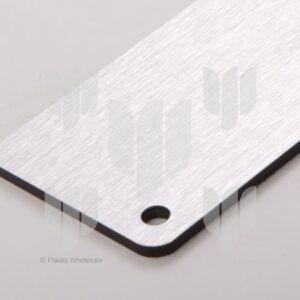About Oil-filled Nylon
Oil-filled nylon, also known by popular brand names such as Ertalon® LFX and Sustaglide, is created by adding lubricant oil to the polyamide structure of nylon, resulting in a thermoplastic that has similar properties to standard cast nylon but offers up to 50% less friction and as much as 10 times better wear resistance.
The self-lubricating nature of oil-filled nylon rods and sheets make them an excellent choice for slow moving, highly loaded machine parts.
Ertalon® is a registered trademark of the Quadrant Group
 Download datasheet (147Kb)
Download datasheet (147Kb)
History
1935 – Nylon is developed from strong polyamide fibre and patented by DuPont
1938 – First used commercially in a nylon-bristled toothbrush
1940 – Nylon stockings go on sale to the public, with DuPont selling 64 million pairs in the first year
1942 – Nylon is put to use in World War II as a replacement for hemp and Asian silk. It is used for tents, parachutes, ropes and tyres
1969 – The first astronauts on the moon wear space suits containing nylon fibres, with Neil Armstrong planting a flag made of nylon
2009 – A self-lubricating, cost-effective artificial knee joint, made of oil-filled nylon, is demonstrated by Stanford engineers
Applications
Oil-filled nylon offers the highest wear resistance of any thermoplastic on the market and is suitable for a wide range of applications. They include:
- Wear pads: Oil-filled nylon combines light weight with the ability to support heavy loads, and is abrasive resistant when in contact with other surfaces
- Mining: Oil-filled nylon is used for pivot bushings on dump trucks
- Machine parts: Gears, bearings, sheaves and sprockets made from oil-filled nylon do not require lubrication, operate almost silently, and are extremely high-wearing
- Food preparation: The self-lubricating, biologically safe properties of oil-filled nylon make it suitable for cutting and chopping boards
Key Properties
General
Density relative to water (=1), 1.13
Water absorption (24 hrs), 0.66%
Thermal
Continuous Service Temperature, 105°C (221°F))
Melting point, 215°C (419°F)
Mechanical
Tensile Modulus of Elasticity, 3000 MPa
Elongation at Yield, 5%
Elongation at Break, 25%
Impact Strength, Notched Izod @ 23°C, 7.0 kJ/m2 (3.32 ft-lbs/in2)
![]() Download datasheet (147Kb)
Download datasheet (147Kb)



